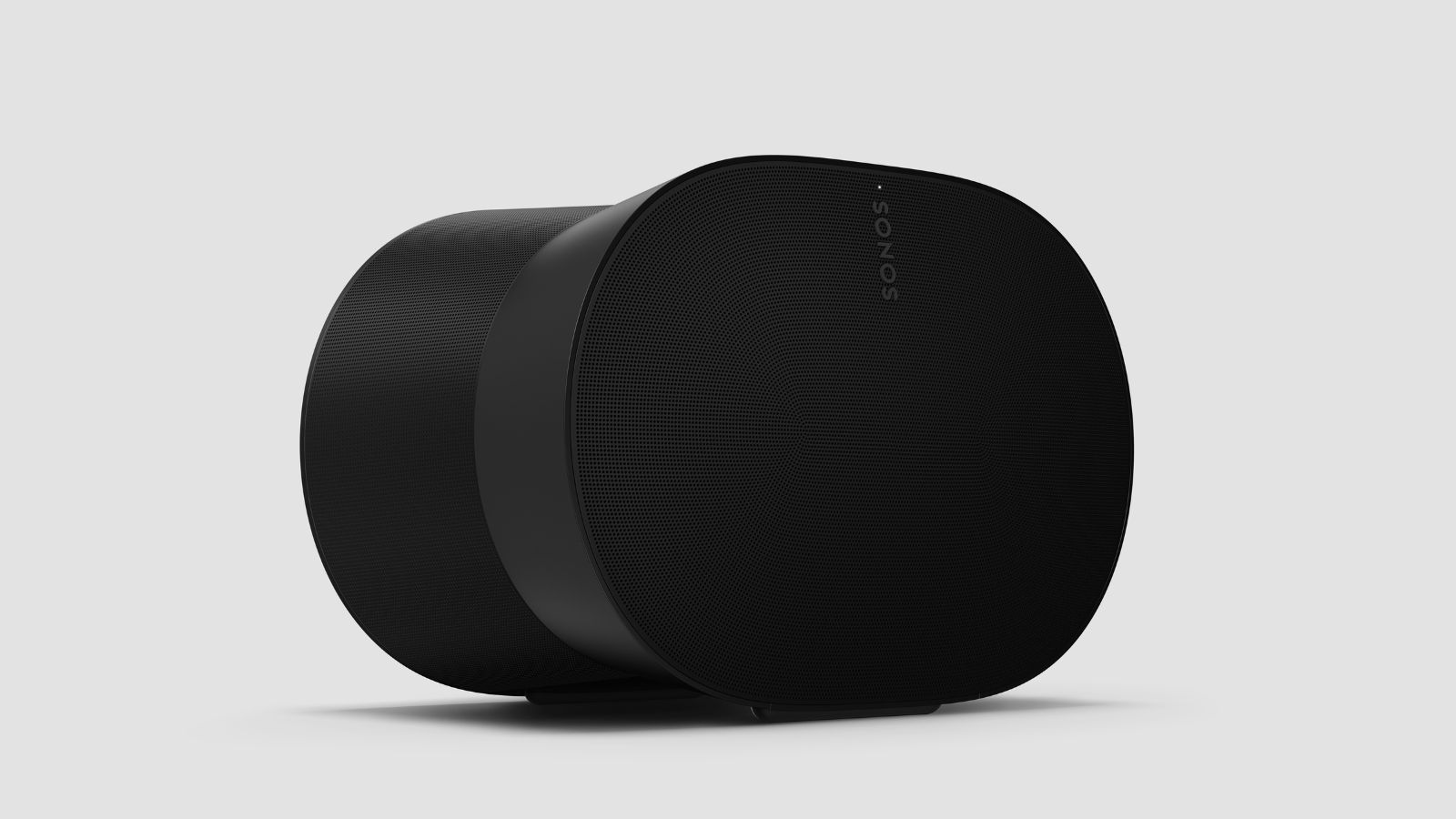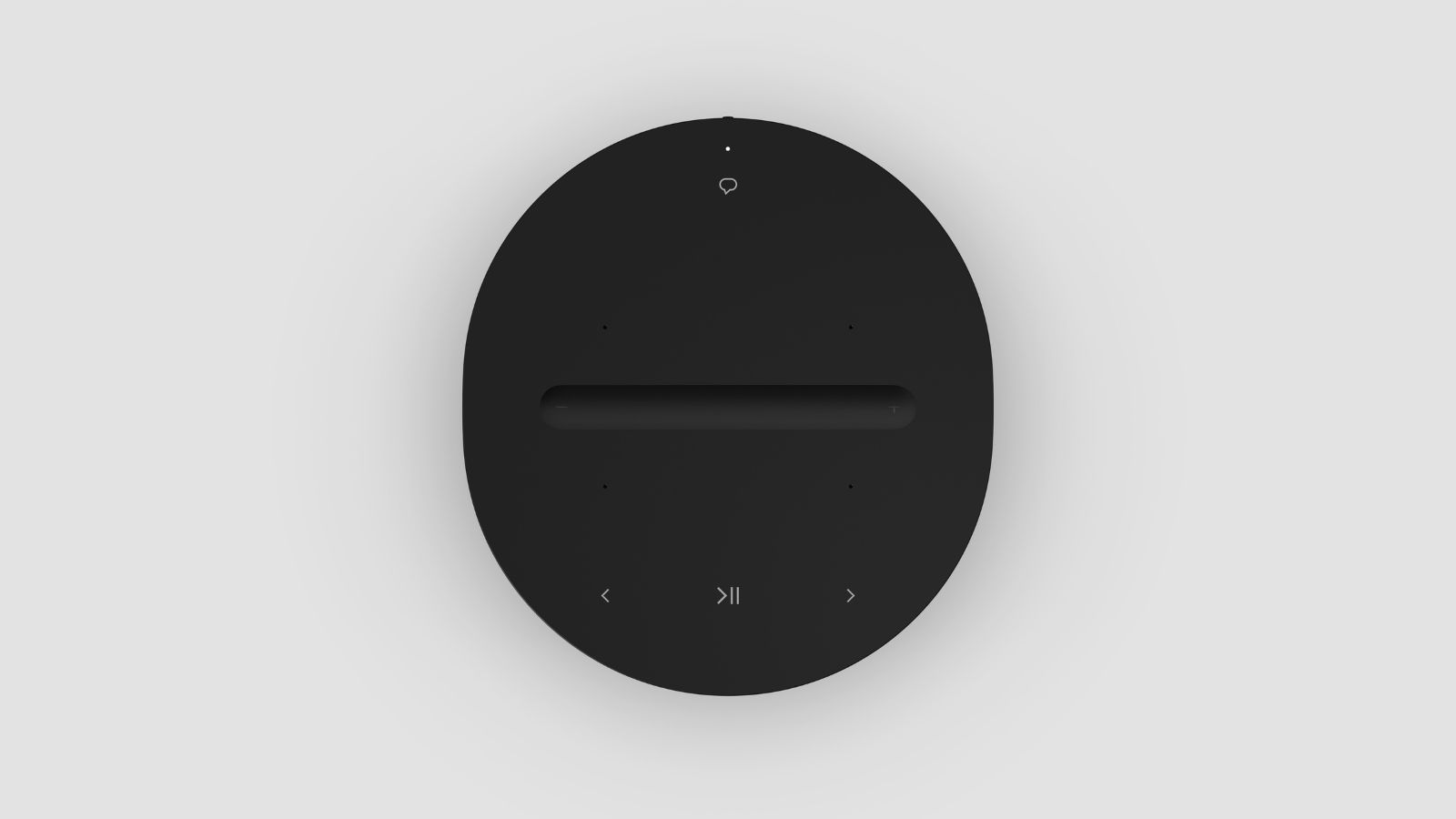Sonos' new Era 100 and Era 300 attacks Apple's HomePod on both flanks
A new Era for Sonos.

After rumors and rumblings, the new Sonos speakers are finally here – the Era 300, and the Era 100. Both have some incredible features on board, with classy new designs, and, more importantly to us, directly target the HomePod 2 and Spatial Audio. They’re not coming out until the end of this month, but that just gives us more time to get excited about the latest connected speakers from one of the fastest-growing audio brands.
Replacing the Sonos One and adding a new size and price point to the range, the new Sonos speakers evoke the intent to usher in a new era of sound. One that, to us, looks to have Spatial Audio at the forefront.
The Sonos Era 300

The Sonos Era 300 isn’t supposed to replace the Sonos five, but sits just below it in terms of size and price. You’ll be able to pick one up in black or white from the Sonos website on March 28, and it will cost you $449. That’s a good bit more than the HomePod 2, but it looks to pack in more features for the money.
Also appearing for the first time on a Sonos device is Bluetooth 5.0.
That includes a number of different ways you can listen to your music. Where the HomePod only has a plug to make sure it's powered, the new Sonos Era 300 is going to have an extra physical input on the back. There’s a USB-C line-in port at the back, which you can use with the Sonos adapter to plug in loads of different devices. That could be a headphone jack directly into a Digital Audio Player, or even a line-in from a turntable. Speaking to the Sonos team it sounds like this input has to be from a turntable with a built-in preamp, but it’s a cool feature nonetheless, and crucially, one that the HomePod 2 doesn’t have.
Also appearing for the first time on a Sonos device is Bluetooth 5.0. You can hook up almost any music device with Bluetooth, and listen to music when even the internet is down. Again, something the HomePod 2 can’t do. Like the HomePod 2, however, the Era 300 also can play music over AirPlay 2, which means support for Apple Music.

There’s room for other platforms too, such as Spotify, Tidal, Deezer, and Amazon Music. That last one is where one of the focuses of the new Era 300 comes in – Spatial Audio. With an upward-firing tweeter supported by twin woofers and a pair of what Sonos calls ‘custom drivers’ facing out to the side, the Era 300 is designed with Spatial Audio and Dolby Atmos in mind. The first Spatial Audio service announced was Amazon Music, but Sonos has since told us that Apple Music's Spatial Audio will also be supported.
Making sure that the sound quality sounds as good as possible is Sonos’s TruePlay, which measures the room interior to equalize the sound for the best sonic performance. This is a feature now available to Android users as well, and something that HomePod users have been able to do for a little while.
Master your iPhone in minutes
iMore offers spot-on advice and guidance from our team of experts, with decades of Apple device experience to lean on. Learn more with iMore!

Also using the Spatial Audio tech inside the new Era 300 is the Dolby Atmos support for 7.1.4 surround sound when two speakers are connected to a Sonos Beam soundbar. The setup will use the speakers as stereo rears, adding more to go with the Sonos soundbars and separate subwoofers.
Using the built-in mics, you can connect to Alexa and use the Era 300 as a smart speaker. Sonos Voice control will let you control the speaker if you’d rather not use Alexa as well, which is a nice touch. There is no word on support for other smart assistants like Siri, but Alexa is one of the most popular so it’s likely many won’t mind. There are those privacy concerns that go with Amazon’s assistant, but you can always turn it off.

Letting you completely shut those voice assistants completely off is the new UI. There’s a switch at the back of the speaker that turns off the microphones inside the device, and a small touch button on the top that can turn the voice assistants off through software. Joining the speech bubble is a new volume slider, as well as a play button and a Bluetooth button to connect a phone or other device.
So the Era 300 is the bigger of the two speakers, with a focus on Spatial Audio. No word yet on how it sounds, but as soon as we have one in our hands we’ll be sure to let you know.
Sonos Era 100

The Sonos Era 100 is the smaller of the two speakers, with no support for Spatial Audio. It shares many of its features with its bigger sibling, albeit in a more compact case. The Era 100 will cost $249, and is coming to the Sonos Store on March 28.
The biggest difference between the two speakers is the size. The Sonos Era 100 features a more compact design, with a 25% larger mid-woofer than the Sonos One, and a pair of tweeters. This, much like the bigger Era 300, can then be used with the TruePlay tuning tech to make sure that the little speaker sounds its best, no matter what your room looks like.

The same inputs carry over from the Era 300, so you’ll be able to play music through WiFi 6, Bluetooth, and USB-C line in. That means that you can plug a record player into this one too.
That snazzy new UI is here, although a little shrunk down for the smaller speaker as well. The biggest omission over the Era 300 is a lack of Spatial Audio support on this smaller speaker, making that the big selling point of the bigger and more expensive version.
A new Era
So those are the new Sonos Era range of speakers, and where one competes with the HomePod 2 on price, the other competes on features. We can’t wait to see what the new speakers look and sound like in hand (or on shelf – they look pretty heavy). We will, of course, compare the new Sonos line to the HomePod 2 as soon as we can - so stay tuned for more Sonos Era coverage.

As iMore's Senior Staff writer, Tammy uses her background in audio and Masters in screenwriting to pen engaging product reviews and informative buying guides. The resident audiophile (or audio weirdo), she's got an eye for detail and a love of top-quality sound. Apple is her bread and butter, with attention on HomeKit and Apple iPhone and Mac hardware. You won't find her far away from a keyboard even outside of working at iMore – in her spare time, she spends her free time writing feature-length and TV screenplays. Also known to enjoy driving digital cars around virtual circuits, to varying degrees of success. Just don't ask her about AirPods Max - you probably won't like her answer.
